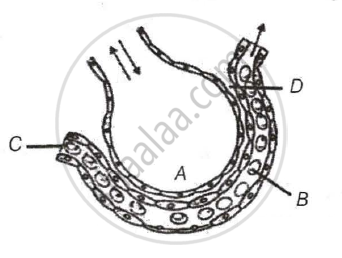Advertisements
Advertisements
प्रश्न
Describe the steps in breathing.
उत्तर
- Inspiration: During inspiration, the atmospheric air is taken into the lungs. It occurs due to the pressure gradient formed between the lungs and the atmosphere. It is an active process in which the diaphragm becomes flat and goes downward, the external intercostal muscles contract so the ribs and sternum move upward and outward. This leads to an increase in the thoracic volume and a decrease in the pressure of the thorax and the lungs. To equalize the low pressure inside the lungs, air from the atmosphere rushes into the lungs. This is an inspiration.
- Expiration: During expiration, the thorax contracts causing air to be exhaled. The diaphragm relaxes and is pushed upwards. It becomes dome-shaped. The intercostal muscles also relax pulling the rib cage inward and downward. This causes a decrease in thoracic volume and leads to an increase in pressure in the thorax and the lungs as compared to the atmospheric pressure. So air from the lungs rushes out. This is expiration.
APPEARS IN
संबंधित प्रश्न
Why do we often sneeze when we inhale a lot of dust-laden air?
Answer briefly the following:
What is the difference between breathing and respiration?
In human respiration, chemical energy is released in the form of ______.
Define Bohr effect and Haldane effect.
Explain why you are not able to breathe normally when you are in closed and crowded places?
During inspiration, the diaphragm ______.
Which of the following part becomes flat during inspiration?
In HMP shunt, number of molecules of CO2 evolved are ______.
The figure given below shows a small part of human lung where exchange of gas takes place. In which one of the options given below, the one part A, B, C or D is correctly identified along with its function.

Complete the table:
| Partial pressure of gases |
Alveolar air | Pulmonary Capillaries |
| PP02 104 | mm Hg | ______ |
| PPC02 40 | mm Hg | ______ |
